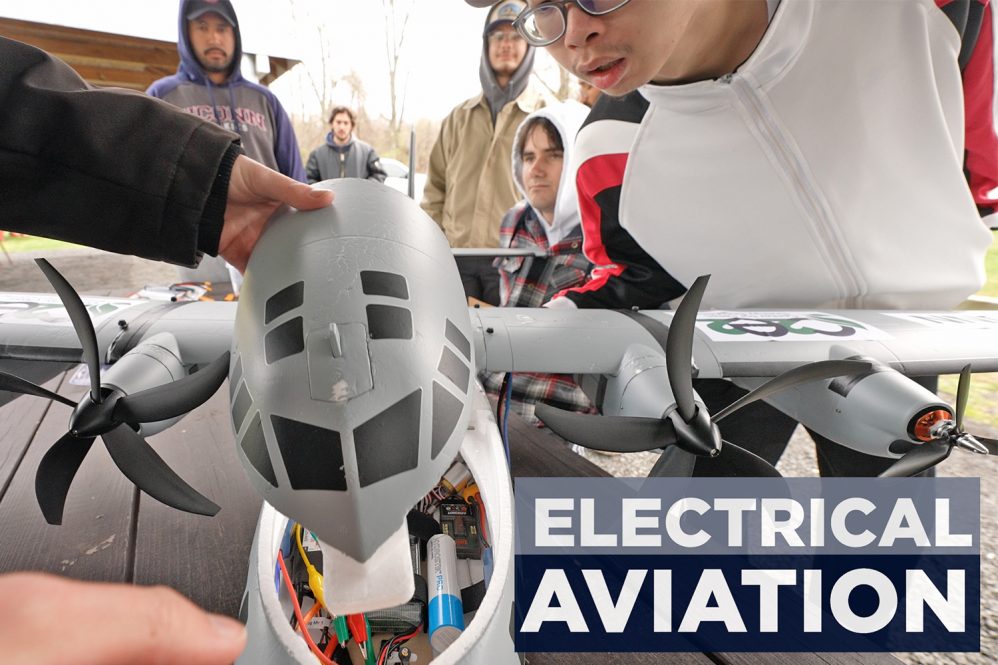By Kate Kurtin
 What happens when you put together top FBI, DHS, and TSA agents with professionals and students from the United States and the United Kingdom? First, the top minds in the field plot how to destroy a major international airport; next they work in teams trying to identify the research challenges that could prevent the destruction. This mock scenario was the focus of an international workshop that took place August 2-4, 2010 at the Stevens Institute of Technology in Hoboken, NJ. Two UConn engineering students were among the lucky few to rub shoulders with experienced operational leaders and intelligence experts as they contemplated ways to protect national security assets. The students were Lance Fiondella (Ph.D. candidate in CSE) and Alex Bernier (M.S. CEE).
What happens when you put together top FBI, DHS, and TSA agents with professionals and students from the United States and the United Kingdom? First, the top minds in the field plot how to destroy a major international airport; next they work in teams trying to identify the research challenges that could prevent the destruction. This mock scenario was the focus of an international workshop that took place August 2-4, 2010 at the Stevens Institute of Technology in Hoboken, NJ. Two UConn engineering students were among the lucky few to rub shoulders with experienced operational leaders and intelligence experts as they contemplated ways to protect national security assets. The students were Lance Fiondella (Ph.D. candidate in CSE) and Alex Bernier (M.S. CEE).
Sponsored by the Department of Homeland Security’s Science & Technology Directorate (DHS S&T), the UK Home Office (UK’s version of the American DHS), and the Office of Security and Counter Terrorism, the Greenfield Aviation Security Workshop, as it was called, was based on the premise that the participants have a “green field” on which to build an aviation security system from the ground up.
“We essentially acted as a think-tank for DHS and the Home Office to come up with long-term research to help redefine how we protect airports,” Alex said. Alex and Lance explained that the mission of the conference was to affect airport security policy by envisioning security in the year 2027. “From the perspective of the program manager, you can dump $100,000 into developing a new X-ray machine and it will stop a little bit more terrorism, or you can invest the same $1,000,000 to rethink and reframe policy and implementation of technology to potentially end all terrorism,” Alex said. In this light, the think tank was instructed to think not just outside the box, but outside the decade.
The workshop included roughly 30 young engineers and scientists, representing a wide range of both academic and disciplinary backgrounds, assembled for unconstrained dialogue and sharing of ideas to potentially redefine aviation security. The discourse was facilitated by a third party moderator from the Cambridge, UK based company KnowInnovation, who put the participants to work immediately doing “mental calisthenics,” Lance explained. He said that while exhausting at times, the activities helped to usher in a reasonable DHS aviation agenda for the next 17 years, or until 2027, which was the goal year.
The two men joked that thinking so far into the future was more difficult for the logical engineering brain than for the rest of the participants. “We were constantly being told by the facilitators that we were in 2027 and many people couldn’t break out of 2010, so we engaged in group brainstorming activities to get us there,” Lance said. He remarked that the social scientists in the group were constantly throwing out hypothetical 2027 scenarios and it was always the engineers who wanted to get back to reality and ask how to get to this hypothetical world. Alex was quick to point out that it was the outlandish suggestions that DHS was looking for, and the engineers were there to see if they could be done. “As engineers I think we had one of the hardest times really thinking outside of the box,” Alex explained.
Lance and Alex were invited to participate in the Greenfield Aviation Security Workshop because of their expertise in different areas of aviation innovation, and also because of UConn’s participation as one of DHS’ National Transportation Security Center of Excellence (NTSCOE). Lance’s focus group examined the ‘security balance,’ or the delicate trade-off between security needs and improved performance as well as the underlying economics. Members of his group included students from Arizona State University, San Jose State University and the City University in London along with an expert from the London-based think tank, the Smith Institute.
Alex’s team, comprising academics from Rutgers University, the University of Nottingham and the University of Arizona under the mentorship of a TSA specialist, was charged with the task of redesigning the airport building for enhanced security and with developing a theoretical plan to use the structure as a terrorism deterrent. Alex’s team is hopeful that reconfigurable architecture will reduce costs and risks by adding mobile walls and more fluid infrastructure. With guidance from their mentor, the team continues to develop their ideas, with hopes to eventually submit a proposal to DHS.
Some of the participants will be invited to travel to the U.K. in December for a follow-up meeting to further advance their ideas. Leaders also suggested the possibility of traveling to Rio de Janeiro to learn about the aviation security challenges that must be addressed prior to the 2016 Summer Olympics.
Along with seven other institutions, UConn has been a designated NTSCOE since 2007.



